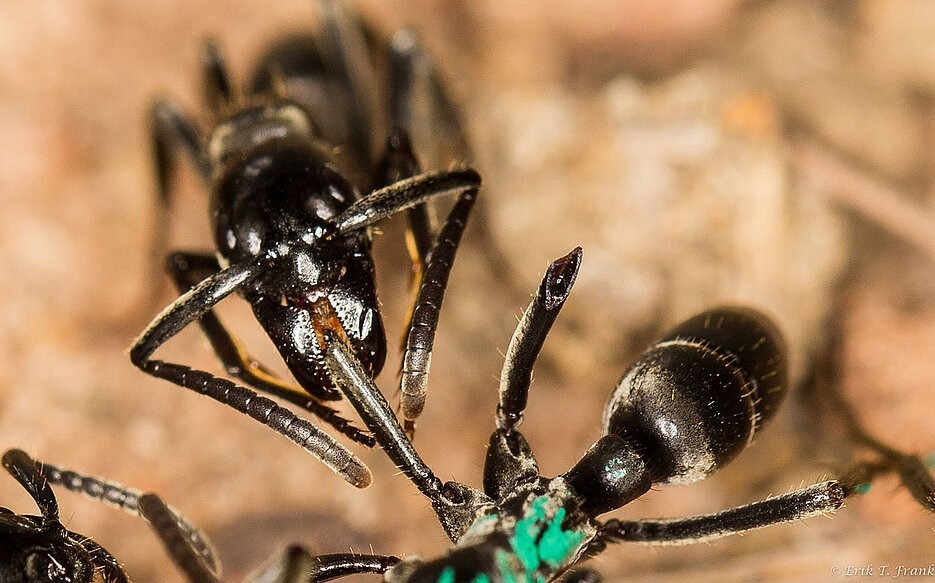The diet of the ubiquitous Matabele ants (Megaponera analis) found south of the Sahara is restricted to termites.
 A Matabele ant tends to the wound of a fellow ant whose legs were bitten off in a fight with termites. Image Credit: Erik Frank / Universität Würzburg
A Matabele ant tends to the wound of a fellow ant whose legs were bitten off in a fight with termites. Image Credit: Erik Frank / Universität Würzburg
Termite soldiers defend their conspecifics by using their powerful mandibles, which makes their hunting expeditions dangerous. As a result, injuries sustained by the ants during hunting are frequent.
There is a considerable chance of not recovering if the wounds become infected. Nonetheless, Matabele ants have evolved a highly developed medical system: they can discriminate between non-infected and infected wounds, effectively treating the latter with antibiotics they manufacture on-site. A group led by Professor Laurent Keller of the University of Lausanne and Dr Erik Frank of Julius-Maximilians-Universität (JMU) Würzburg reported this in the journal Nature Communications.
Treatment Drastically Reduces Mortality
Chemical analyses in cooperation with JMU Professor Thomas Schmitt have shown that the hydrocarbon profile of the ant cuticle changes as a result of a wound infection.”
Erik. T. Frank, Professor, Department of Ecology and Evolution, Biophore, University of Lausanne
It is precisely this change that the ants are able to recognize, thus diagnosing the infection status of injured nestmates.
The ants then treat the infected wounds by applying proteins and antimicrobial compounds. The metapleural gland, situated on the side of the thorax, is where they obtain these antibiotics. Of the 112 components found in its secretion, half have antimicrobial or wound-healing properties. Additionally, the research team found that the therapy is very effective: it reduces the mortality rate of infected individuals by 90%.
Analysis of Ant Antibiotics is Planned
Frank further added, “With the exception of humans, I know of no other living creature that can carry out such sophisticated medical wound treatments. Laurent Keller also adds that these findings “have medical implications because the primary pathogen in ant’s wounds, Pseudomonas aeruginosa, is also a leading cause of infection in humans, with several strains being resistant to antibiotics.”
Are Matabele ants truly exceptional in this regard? The Würzburg researcher now hopes to investigate how other ant species and other social animals take care of wounds. The researcher also hopes to work with chemistry research groups to identify and examine the antibiotics that Matabele ants use. This could result in the development of novel antibiotics that are suitable for human use.
Source:
Journal reference:
Frank, T, E., et al. (2023).Targeted treatment of injured nestmates with antimicrobial compounds in an ant society. Nature Communications. doi/s41467-023-43885-w